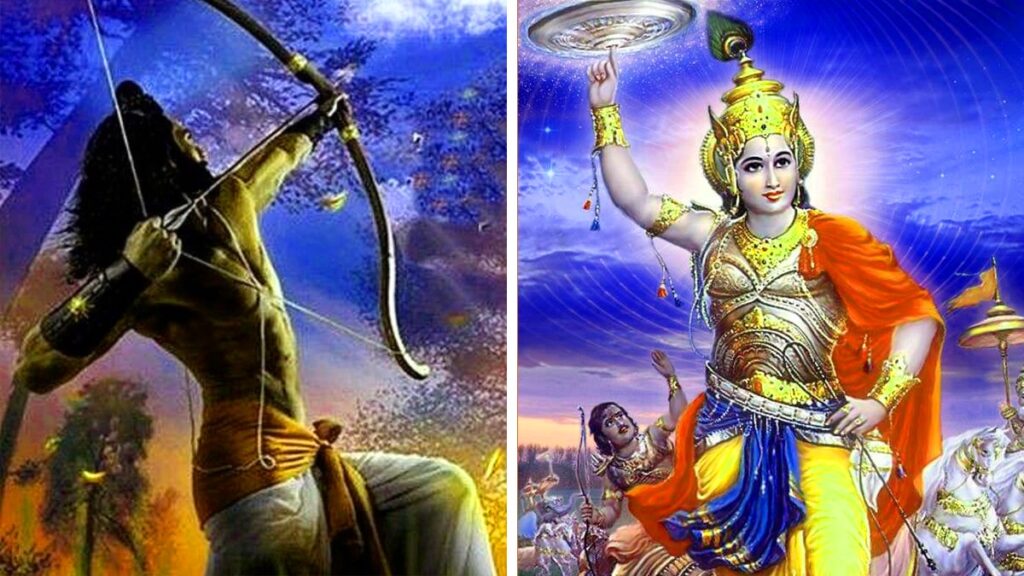
The answer to this question delves into Hindu mythology and different interpretations, so it’s important to acknowledge that various perspectives exist. Here are some points to consider:
1. Avatars and Their Roles:
Both Lord Krishna and Lord Rama are considered incarnations of Lord Vishnu, the preserver god in Hinduism. However, their specific roles and challenges differed.
- Krishna: Often portrayed as a divine statesman and warrior, facing complex conflicts like the Kurukshetra war. The Sudarshana Chakra, a powerful weapon representing cosmic cycles and divine will, could symbolize his role as a cosmic force upholding Dharma (righteousness).
- Rama: Known for his righteousness, courage, and adherence to Dharma. He faced more personal battles like rescuing his wife Sita and restoring order in his kingdom. His primary weapons like the bow and arrows represent his exceptional skill and determination.
2. Different Narratives and Interpretations:
- The Ramayana and Mahabharata, the epics featuring each Lord, originate from different periods and have unique portrayals. The Sudarshana Chakra might not have been prevalent in Rama’s narrative at the time of its composition.
- Different interpretations within various Hindu traditions exist. Some consider possessing the Sudarshana Chakra specific to Krishna’s avatar, while others see it as a symbolic representation of Vishnu’s power present in both avatars.
3. Symbolism Beyond Weapons:
- Ultimately, both Rama and Krishna embody Dharma and uphold divine principles. Their weapons and attributes symbolize their unique qualities and struggles within their respective narratives.
- Focusing solely on the absence or presence of a specific weapon might miss the broader message of each god’s role and the values they represent.
It’s important to remember that these are just interpretations, and different schools of thought might have varying perspectives. The key takeaway is to appreciate the unique qualities and lessons each divine figure imparts within their narratives.


